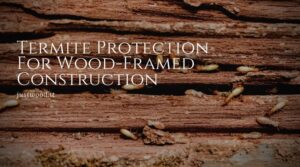Wood stains should be used to enhance the natural color of wood, rather than to try and hide or obliterate it. If the latter is your goal then the best bet is to use paint, not stain.
Table of Contents
Introduction
There are various types of stain and choosing the right one can appear to be a rather confusing decision. However, what it really boils down to is the following:
- it should be easy to apply
- must be compatible with the finish you have in mind
- must dry within a reasonable amount of time
- should maintain its color without fading
Most wood stains are designed to soak into the wood, but there are exceptions to this rule. Most notably, external wood stains form a thin film on the surface — not unlike paint — in order to protect the wood. This is why most stains that you’ll find your local store are classified as indoor stains, not outdoor ones. However, many indoor stains are suitable for use outside as long as the wood is subsequently protected by several layers of varnish.

Water Stains
Description
Water stains come as a powder that must be mixed with water. These are the cheapest of all stains but are not typically available in the large home improvement stores. Instead, you will probably have to buy them through a mail-order finishing supplier. These stains are only supplied in a few colors — Vandyke crystals (brown), mahogany (warm brown) and nigrosine (black) — are the most common. To attain the particular color that you need it will be necessary to mix these three together. To change the depth of the color, adjust the powder to water ratio.

Applying a water stain
Apply the stain to the wood with a cloth or paintbrush. A brush is best if you are staining carvings, moldings or any other irregularly-shaped item. However, a cloth holds more stain and, for flat surfaces, is much easier to use. Before applying the first layer of stain, lightly wet the wood. This will help to produce an even spread of the stain. Make sure that you have enough for the whole job: it is far better to throw away the excess than it is to try and match the previous batch’s color precisely. Don’t pour the stain on, but be very generous its application. Water stains dry very slowly, so you should rub-off the excess stain using a paper towel or a lint-free cloth. Once the stain has dried, apply more stain to any areas that have become too light. Note: water stains appear to dry in about 40 minutes but a second coat should not be applied for at least 12 hours.
| # | Preview | Product | Rating | Price | |
|---|---|---|---|---|---|
| 1 |
|
SamaN Interior Water Based Wood Stain - Natural Stain for Furniture, Moldings,... | 3,566 Reviews | $18.49 | Buy on Amazon |
| 2 |
|
Guardsman Water Mark Remover Cloth - Erase White Rings & Haze Caused by Moisture... | 1,169 Reviews | $13.12 | Buy on Amazon |
| 3 |
|
Varathane 381121 Water Based Wood Stain, Quart, Smoke Gray | 41 Reviews | $18.99 $14.97 | Buy on Amazon |
Oil Dyes
Description
Oil dyes usually come ready-mixed and are classified by the type of wood they most closely match (such as oak, mahogany and so on). These color names should be used as a rough guide only and should not stop you from experimenting. For example, the bird table (Vol. I, Issue 8) was stained with a cherry-based color, even though it was made out of pine, thus giving it a deep red color more in keeping with its new habitat.
To lighten the color of a particular dye, thin it out using an appropriate solvent. Oil dyes are well suited to outdoor applications as they take an average time to dry (between 30 -40 minutes); water stains dry too slowly and alcohol stains dry too quickly for large applications.
Applying an oil dye
Oil dyes can bite deeply into the uneven grain, such as is found with beech, and this can produce an uneven, patchy finish. To overcome this problem it is imperative that the wood is prepared carefully and is well sanded. Oil dyes can be applied using a brush or a cloth.
| # | Preview | Product | Rating | Price | |
|---|---|---|---|---|---|
| 1 |
|
Wood Dye – Powdered Solvent 5 Color Kit – Wood Stain Kit (25 Grams) | $16.99 | Buy on Amazon | |
| 2 |
|
Mixol Universal Tints, Oxide Dark Brown, 23, 20 ml | 2,574 Reviews | $10.90 $9.98 | Buy on Amazon |
| 3 |
|
SamaN Interior One Step Wood Seal, Stain and Varnish – Oil Based Odorless Dye... | 1,466 Reviews | $27.99 | Buy on Amazon |
Alcohol Stains
Description
Alcohol-based stains are the choice of most professional woodworkers because of the wide range of colors available. They are sold in powder form and must be mixed in the right color. Because they are alcohol-based, these stains can also be mixed with shellac polish for color matching and minor touch-ups during the polishing process.
Alcohol stains dry very quickly (typically in about five minutes) and are therefore ideally suited to spray application. However, the fact that they dry so quickly can also cause problems and a patchy finish is not unknown.
Applying an alcohol-based stain
As mentioned above, the best way of applying this stain is to use a spray gun. Apply the stain sparingly, or the dye will be removed by the polish. You can also dip with alcohol stains, ie put the object into the container of stain. The best approach to this is to dip the object in and leave immersed for about five minutes. Whichever application method you decide to use, it is a good idea to add a little transparent French polish to the mix as this will help to adhere the stain to the wood.
| # | Preview | Product | Rating | Price | |
|---|---|---|---|---|---|
| 1 |
|
Spirit Stain Rainbow Colors for Wood (Black) | 26 Reviews | $14.99 | Buy on Amazon |
| 2 |
|
Brown Alcohol Based Dye - Walnut Brown Liquid Dye | 252 Reviews | $18.99 | Buy on Amazon |
| 3 |
|
Dark Vintage Maple TransTint® Dye | 1,739 Reviews | $30.48 | Buy on Amazon |
Pigment Stains
Description
This type of stain is made from finely ground pigments. These do not dissolve as dyes do. Pigment stains add a semi-opaque color to the wood and are best used to disguise the original look and feel of the wood (such as on low-grade lumber).

Applying a Pigment Stain
Apply the stain with a cloth or brush and be very liberal with the amount of stain applied. However, once the entire surface has been coated, wipe off any excess stain with a soft lintfree cloth. Otherwise, the end result may be patchy.
| # | Preview | Product | Rating | Price | |
|---|---|---|---|---|---|
| 1 |
|
Mixol Universal Tints, Oxide Dark Brown, 23, 20 ml | 2,574 Reviews | $10.90 $9.98 | Buy on Amazon |
| 2 |
|
Black Pigment Powder, Matte Black Iron Oxide Powder, Black Concrete Pigment... | 116 Reviews | $35.99 | Buy on Amazon |
| 3 |
|
Wood Dye - Aniline Dye 5 Color Kit - Wood Stain Kit | 2,563 Reviews | $20.99 $19.50 | Buy on Amazon |
Wax Stains
Description
Wax stains are essentially a ready-made mix of finishing wax and a particular stain. One very popular wax stain is an “antique” pine wax. Because this is a wax stain it cannot be used under any other type of finish, such as shellac. Think of the wax stain as being a short-cut solution, combining the stain and waxing process into one. As such, it is not as good a solution as using a separate stain and wax or shellac. Once you have applied a wax stain, there really is no going back: sanding down the waxed surface (in order to remove the layer of wax) is not recommended as the wax simply clogs-up the sandpaper. Therefore, these stains should only be used in extreme cases when you really cannot use another product.

Applying a wax stain
Apply the wax stain as you would a normal finish coat of wax.
| # | Preview | Product | Rating | Price | |
|---|---|---|---|---|---|
| 1 |
|
Minwax 786004444 Paste Finishing Wax, 1 Pound (Pack of 1), Dark, 16 Ounce | 1,366 Reviews | $14.25 | Buy on Amazon |
| 2 |
|
Furniture Clinic Wood Stain | Multiple Finishes | Fast Drying | Indoor and... | 4,402 Reviews | $11.95 | Buy on Amazon |
| 3 |
|
Briwax Original Furniture Wax 16 Oz - Dark Brown | 548 Reviews | $29.50 | Buy on Amazon |





